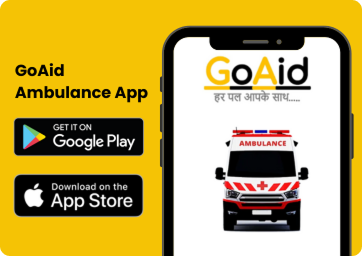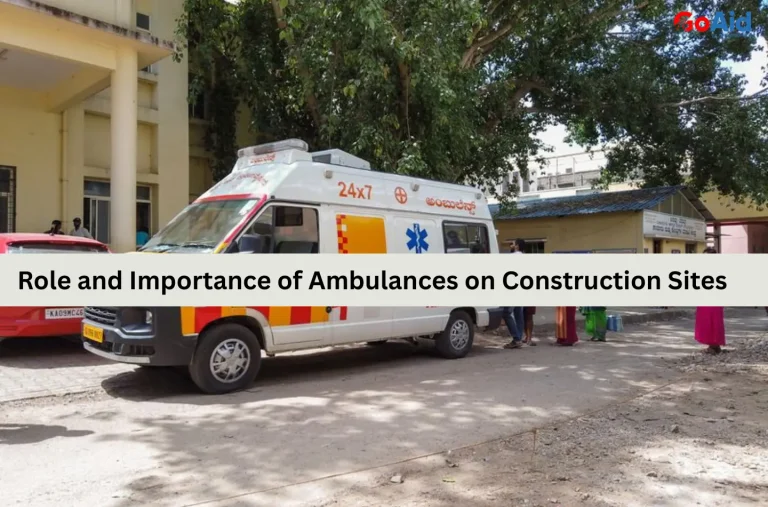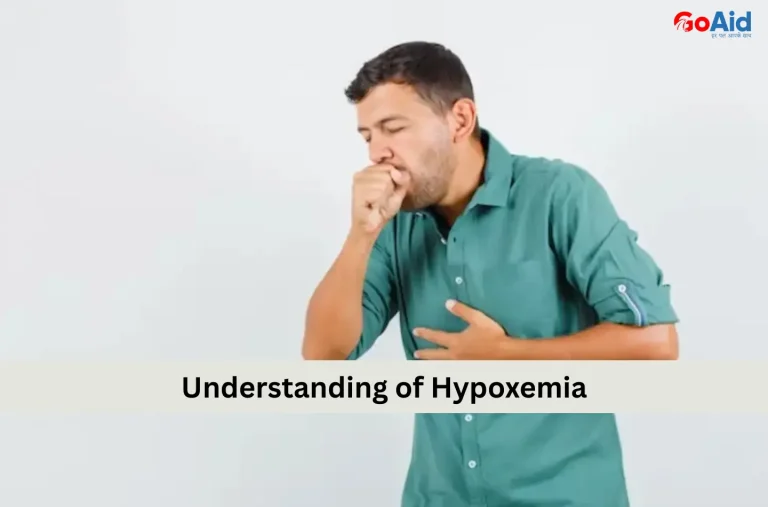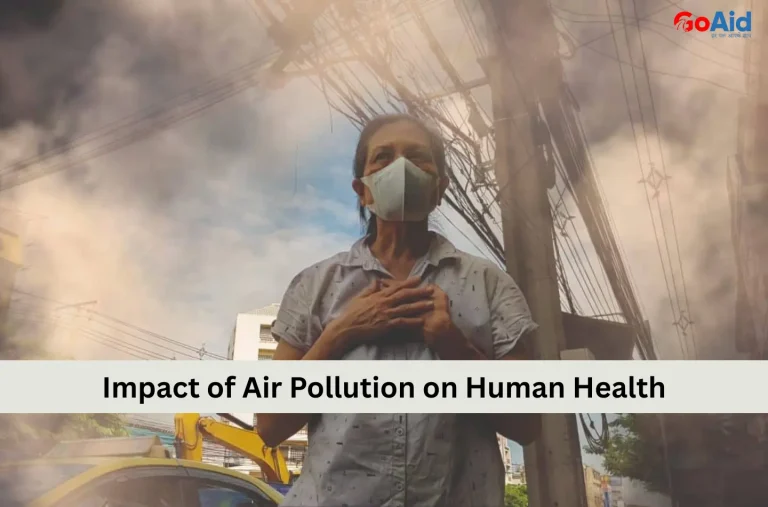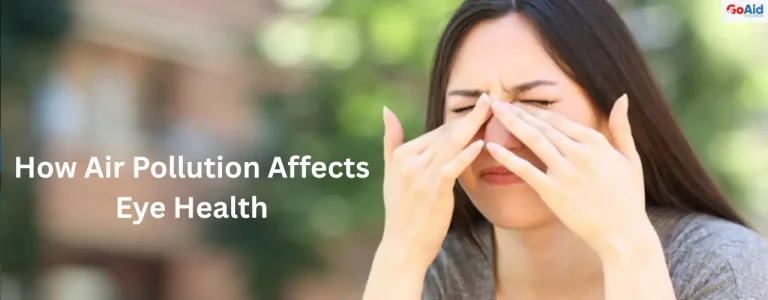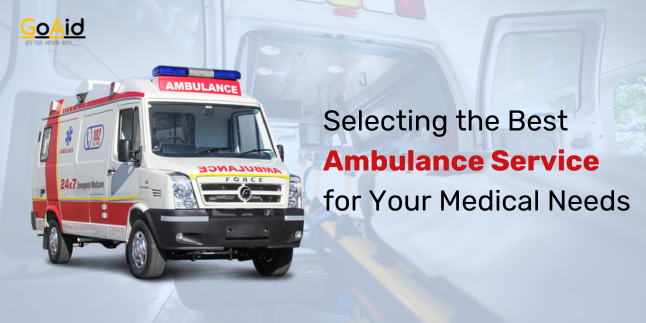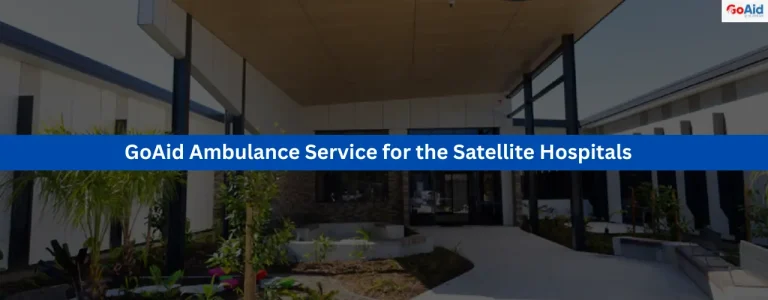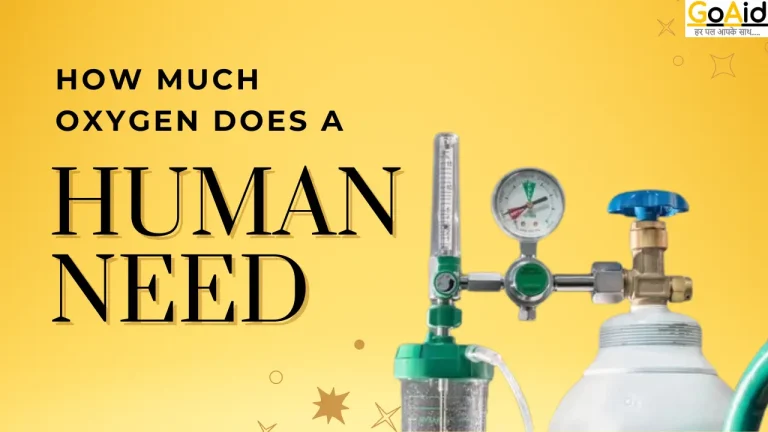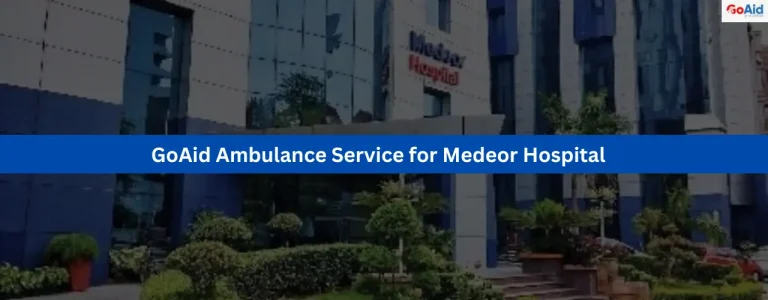In India, when it comes to the real estate industry and housing societies, the business is always at an all-time bloom. This business gives jobs to millions in India and also shows the rise of medical emergencies and the need for immediate medical assistance. This is why, at many housing societies, we can see the on-site ambulances deployed 24/7. But still, there are many real estate and housing societies out there that donŌĆÖt consider deploying the on-site ambulances near them, and this is concerning.┬Ā
This is why, in this blog, we have mentioned the need for ambulance services in the real estate and housing societies. In this blog, we have also highlighted the overview of this industry in India and related common health and safety issues. We have also added about why ambulance services are essential to these societies, types of ambulances they might need, and current challenges & their solution in providing on-site ambulances near these societies. Are you excited to know all these details? Then read this blog to the end.
So, letŌĆÖs start-
Overview of the Real Estate & Housing Societies in India
IndiaŌĆÖs real estate sector has witnessed robust growth, with modern housing societies and gated communities rapidly emerging in urban and suburban areas. These societies offer a range of amenitiesŌĆösecurity, recreation, and green spaces, catering to families, professionals, and senior citizens.┬Ā
As populations in these residential clusters swell, the need for robust emergency ambulance services in residential areas has become critical. Medical emergencies, accidents, and sudden health crises are not uncommon, especially among elderly residents and children. Despite the increasing demand, many societies still lack dedicated ambulance for housing societies or ambulances for gated communities, relying instead on external help that may be delayed by traffic or access issues.┬Ā
Recognizing this gap, leading providers like GoAid Ambulance Service now offer 24/7 residential ambulance service with trained staff and rapid response, ensuring immediate care and peace of mind for residents. This shift is vital for enhancing community health and safety ambulance standards in IndiaŌĆÖs growing townships and apartment complexes.
Common Health & Safety Problems at Real Estate & Housing Societies
Real estate and housing societies face several health and safety challenges that can quickly escalate into medical emergencies, highlighting the urgent need for dedicated ambulance services and rapid emergency response.
1. Delayed Medical Response
In the absence of an emergency ambulance in a residential area, residents face critical delays during heart attacks, strokes, or severe injuries, risking their lives due to slow hospital transfers and a lack of immediate care.
2. Elderly Health Emergencies
With many senior citizens living independently, societies often encounter sudden falls, breathlessness, or chronic illness flare-ups. Immediate ambulance access for housing society access is vital for timely intervention and safe hospital transfer.
3. Accidents in Common Areas
Slips, trips, and falls in stairways, elevators, or playgrounds are frequent, especially among children and the elderly. Quick first aid in residential buildings and ambulance support are essential to prevent complications.
4. Infectious Disease Outbreaks
Events like COVID-19 have shown the need for isolation areas, oxygen support, and rapid ambulance evacuation to contain the spread and provide urgent care for affected residents.
5. Lack of Trained First Responders
Societies often lack staff trained in first aid or emergency protocols, leading to panic and ineffective response during medical emergencies, increasing the importance of a residential ambulance service with skilled paramedics.
6. Accessibility Issues for Ambulances
Narrow lanes, blocked entrances, or poor society layouts can delay ambulance arrival, making ambulance accessibility in townships a critical concern for timely medical intervention.
7. Medical Emergencies During Night or Holidays
Emergencies can happen at any time, but without a 24/7 on-call ambulance for the housing society, residents may struggle to get immediate help, especially during nights or public holidays.
The Risky Nature of Real Estate & Housing Societies
Real estate and housing societies in India are expanding rapidly, driven by urban migration, infrastructure growth, and the demand for modern amenities. However, this growth brings inherent risks, especially regarding medical emergencies and resident safety.
High-density living, diverse age groups, and shared facilities increase the likelihood of health incidents, from cardiac arrests to accidental injuries. Many societies house elderly residents and children, both highly vulnerable during emergencies. Accessibility issues, such as narrow lanes and congested entry points, can delay emergency response.
Additionally, the absence of a dedicated ambulance for a housing society or an emergency ambulance in a residential area often leads to critical delays in care. As more people prioritize community living and wellness, the expectation for a robust housing society emergency response and medical infrastructure is rising. Addressing these risks is essential for ensuring resident well-being and maintaining the reputation of modern residential developments.
Current Problems Faced
Despite advancements in amenities, real estate and housing societies in India face persistent challenges in emergency preparedness and healthcare access. Many societies lack a dedicated residential ambulance service or a reliable ambulance for gated communities, relying on city ambulances that may be delayed by traffic or poor accessibility.┬Ā
Medical emergencies, such as heart attacks, falls, or asthma attacks, can escalate quickly without immediate intervention. Inadequate first aid training among staff and residents further hampers an effective response. Societies often struggle with poor internal communication, making it hard to coordinate during crises. Accessibility issues, such as blocked entrances or narrow roads, impede ambulance movement.┬Ā
Limited awareness about emergency protocols and insufficient investment in health infrastructure add to the risk. As the population ages and chronic illnesses rise, the absence of a robust community health safety ambulance system leaves residents vulnerable, emphasizing the urgent need for proactive solutions in IndiaŌĆÖs growing housing sector.
Why Ambulance Services Are Essential for the Real Estate & Housing Societies?
A dedicated ambulance service is crucial for real estate and housing societies to ensure rapid, effective medical emergency response and safeguard residents’ well-being.
1. Immediate Medical Response:
Enables rapid intervention for heart attacks, strokes, or accidents, minimizing complications and saving lives.
2. Support for Vulnerable Residents:
Provides specialized care and safe transport for the elderly, children, or chronically ill residents during emergencies.
3. Improved Community Trust:
Demonstrates commitment to resident safety, enhancing the reputation and appeal of the housing society.
4. Faster Patient Transfer:
Ensures quick and safe transfer to hospitals, bypassing delays caused by city traffic or accessibility issues.
5. Compliance with Safety Standards:
Helps societies meet legal and regulatory requirements for emergency preparedness and resident health protection.
Types of Ambulance Services Might be Required in the Real Estate & Housing Societies
Housing societies require a range of ambulance services to address diverse medical emergencies, resident profiles, and community needs. Here are five essential types commonly used in Indian residential areas:
1. Basic Life Support (BLS) Ambulance
A BLS ambulance for a housing society is equipped with essential medical supplies, oxygen, and a trained EMT. It handles non-critical emergencies, provides first aid, and safely transports patients needing monitoring or basic care to hospitals or clinics.
2. Advanced Life Support (ALS) Ambulance
An ALS ambulance features advanced equipment like cardiac monitors, defibrillators, and ventilators, staffed by paramedics. It is crucial for serious emergenciesŌĆöheart attacks, unconsciousness, or severe traumaŌĆöto offer advanced interventions en route to the hospital.
Also Read: Difference between BLS Ambulance and ALS Ambulance
3. ICU Ambulance
ICU ambulances act as mobile intensive care units, equipped with ventilators, infusion pumps, and critical care drugs. Staffed by doctors and critical care nurses, they are ideal for high-risk or critically ill patients requiring constant monitoring and advanced support during transfer.
4. Wheelchair Ambulance
Wheelchair ambulances are designed for elderly or disabled residents needing non-emergency transport. With ramp access and secure seating, they ensure safe, comfortable transfers for routine checkups or hospital visits, supporting community health safety ambulance needs.
5. Mortuary Ambulance
A mortuary ambulance for apartments and flats is temperature-controlled and maintains hygiene for transporting deceased residents with dignity. It is essential for respectful and safe transfer during sensitive times, supporting the societyŌĆÖs comprehensive emergency preparedness
Current Challenges in Providing Ambulance Services to Real Estate & Housing Societies
Despite growing demand, real estate and housing societies in India face significant obstacles in ensuring swift, reliable ambulance access for residents during medical emergencies.
1. Traffic Congestion:
Urban traffic often causes critical delays for ambulances, making timely emergency ambulance response in residential areas difficult and increasing the risk for patients.
2. Poor Internal Accessibility:
Narrow roads, blocked entrances, and poorly planned layouts hinder ambulance movement, slowing down emergency response within housing colonies.
3. Lack of On-Site Ambulance:
Most societies lack a permanent residential ambulance service, forcing reliance on distant city ambulances that may not arrive quickly during emergencies.
4. Limited Awareness:
Residents and staff often lack knowledge about emergency protocols and the importance of the housing society’s emergency response, causing confusion and delays during crises.
5. Insufficient First Aid Training:
Few societies provide regular first aid training in residential buildings, leaving residents and staff unprepared to stabilize patients before ambulance arrival.
6. Equipment Shortages:
Ambulances may lack essential medical equipment or regular maintenance, compromising the quality of care provided during emergencies.
7. Financial Constraints:
Budget limitations restrict investment in on-site ambulance for housing society services and advanced medical equipment.
8. Coordination Issues:
Poor communication between society management, security, and ambulance providers leads to slower response and inefficient patient transfer.
9. Regulatory Compliance:
Navigating complex legal requirements for ambulance in the real estate sector can be burdensome for society management.
10. Variable Demand:
Fluctuating resident populations and unpredictable emergencies make it difficult to plan and staff ambulance services efficiently.
The Right Solution ŌĆō On-site Ambulance Services for Real Estate & Housing Societies
Deploying dedicated on-site ambulance services tailored to housing societies is the most effective solution for overcoming these challenges and ensuring rapid medical emergency response.
1. On-Site Ambulance Deployment:
Stationing ambulances within society premises guarantees immediate response, bypassing external traffic and access delays.
2. Infrastructure Upgrades:
Widening roads, keeping entrances clear, and planning for ambulance accessibility in townships ensure vehicles can reach any block quickly.
3. 24/7 Ambulance Availability:
Round-the-clock residential ambulance service ensures help is always available, regardless of the time or day.
4. Community Awareness Programs:
Regular workshops and drills educate residents and staff about emergency protocols and the importance of rapid response.
5. First Aid Training:
Providing first aid in residential buildings training equips residents and guards to stabilize patients until professional help arrives.
6. Modern Equipment and Maintenance:
Investing in well-equipped ambulances and enforcing strict maintenance schedules ensures high-quality emergency care.
7. Flexible Funding Models:
Pooling resources or partnering with providers like GoAid Ambulance Service makes an on-site ambulance for housing societies affordable and sustainable.
8. Efficient Communication Systems:
Installing direct hotlines and digital coordination platforms streamlines communication between residents, management, and ambulance teams.
9. Regulatory Support:
Working with legal experts simplifies compliance for ambulance deployment in the real estate sector, reducing administrative burdens.
10. Scalable Service Plans:
Customizing ambulance services based on society size and resident demographics ensures efficient coverage and resource use.
Future of Emergency Medical Services in Real Estate & Housing Societies
The future of emergency medical services (EMS) in IndiaŌĆÖs real estate and housing societies is set for rapid transformation, driven by technology, policy reforms, and rising resident expectations. Integration of telemedicine, AI-powered triage, and real-time ambulance tracking will enhance response times and care quality.
Public-private partnerships and community awareness programs are expanding EMS reach, making 24/7 ambulance availability a new standard. As societies grow denser and more diverse, demand for specialized ambulances – ICU, BLS, and wheelchair-accessible- will increase.┬Ā
Investments in infrastructure, staff training, and digital communication will further strengthen emergency preparedness. With government and private sector collaboration, EMS will become more accessible, efficient, and resident-centric, ensuring timely medical intervention and improved health outcomes for all.
Legal Obligation for On-Site Ambulances in India for Real Estate & Housing Societies
While there is no universal mandate requiring every housing society to maintain an on-site ambulance, Indian regulations increasingly emphasize emergency preparedness and resident safety. Guidelines from health authorities and state governments encourage societies, especially large gated communities and high-rises – to establish formal tie-ups with ambulance providers or deploy on-site ambulances for rapid response.
During the pandemic, emergency infrastructure and medical access became a priority, prompting many societies to invest in dedicated ambulance services. Non-compliance with safety directives can expose societies to legal risks, penalties, and reputational damage.
As urbanization accelerates, authorities are expected to tighten regulations, making on-site or on-call ambulance service a best practice and, in some cases, a legal necessity for real estate developments and housing colonies.
How can GoAid be used as a Reliable Partner for Housing Societies Ambulance Needs?
GoAid Ambulance Service is a trusted partner for housing societies, offering rapid, reliable, and scalable emergency ambulance in residential areas. GoAid provides a diverse fleetŌĆöBLS, ALS, ICU, and wheelchair ambulancesŌĆöstaffed by trained paramedics and available 24/7.
Their digital booking, real-time tracking, and transparent pricing ensure seamless integration with society management systems. GoAidŌĆÖs experience with large residential projects and gated communities enables customized solutions, from on-call to on-site deployment.
Their commitment to strict hygiene, regulatory compliance, and community health safety makes GoAid the preferred choice for societies seeking to enhance emergency preparedness and resident well-being.
Benefits of Hiring GoAid for Housing Societies
- 10-minute rapid ambulance response in residential areas
- 24/7 availability, including nights and holidays
- Trained paramedics and advanced medical equipment
- Wide range of ambulances: BLS, ALS, ICU, wheelchair
- Easy digital booking and real-time tracking
- Transparent, government-approved pricing
- Strict sanitization and hygiene protocols
- Seamless patient transfer to hospitals
- Customized service plans for society size and needs
- National coverage, including urban and remote locations
Case Studies/Examples (Adani, Tata, Knight Frank)
GoAid Ambulance Service has become a trusted partner for top real estate and facility management brands. For Adani, GoAid provides on-site ambulances and emergency support across their premium residential projects, ensuring rapid response and resident safety.
TataŌĆÖs housing societies benefit from GoAidŌĆÖs customized ambulance deployment and community health safety programs, which include first aid training and regular drills. Internationally, GoAid supports Knight FrankŌĆÖs managed properties in the UK, offering scalable ambulance solutions for large apartment complexes and gated communities.┬Ā
These collaborations showcase GoAidŌĆÖs expertise in delivering reliable, high-quality emergency medical services tailored to the unique needs of real estate and housing societies, both in India and abroad.
Conclusion to the Need of Ambulance Services in Real Estate & Housing Societies
Ambulance services are no longer optional but essential for real estate and housing societies in India. With rising health risks, dense populations, and evolving resident expectations, on-site or on-call ambulances ensure immediate response, save lives, and enhance community trust. GoAidŌĆÖs proven expertise, rapid deployment, and tailored solutions make it the ideal partner for societies seeking robust emergency preparedness. As regulations evolve and technology advances, integrating professional ambulance services will remain a cornerstone of safe, modern living environments.
Call-to-Action (CTA)
Protect your residents and ensure peace of mind with GoAidŌĆÖs reliable ambulance services. Contact GoAid today to set up rapid-response emergency medical support for your real estate project or housing society.
FAQs to the Need of Ambulance Services in Real Estate & Housing Societies
Question-1: Why are ambulances needed at Real Estate & Housing Societies?
Answer: Ambulance for housing society ensures immediate medical response during emergencies, minimizing delays and improving survival chances for residents of all ages, especially in large or high-rise communities.
Question-2: What types of injuries are common in the Real Estate & Housing Societies?
Answer: Common incidents include falls, cardiac arrests, asthma attacks, fractures, and sudden illnesses, all requiring rapid emergency ambulance in residential area access and professional care.
Question-3: Is it mandatory to have ambulance services at Real Estate & Housing Societies in India?
Answer: While not always mandatory, regulations and best practices increasingly recommend residential ambulance service or formal tie-ups for prompt housing society emergency response, especially in larger societies.
Question-4: Can private companies provide ambulance services to Real Estate & Housing Societies?
Answer: Yes, private providers like GoAid Ambulance Service offer dedicated ambulance for gated communities, ensuring 24/7 emergency support and professional medical care for residents.
Question-5: What should a Housing Society look for in an ambulance service provider?
Answer: Societies should prioritize providers with trained staff, fast response, modern equipment, transparent pricing, and experience in ambulance in real estate sector deployments.
Question-6: What is an on-site ambulance service?
Answer: On-site ambulance for housing society means stationing an ambulance within the premises, ensuring instant medical care and rapid hospital transfer during medical emergencies in housing colonies.
Question-7: How does an ambulance service improve worker safety on Real Estate & Housing Societies?
Answer: Ambulance services provide immediate first aid in residential buildings, reduce panic, and ensure safe patient transfer, enhancing overall community health safety ambulance standards.
Question-8: Can ambulance services be customized based on the size of the project?
Answer: Yes, ambulance for apartments and flats can be tailored to society size, resident demographics, and specific medical needs for optimal coverage.
Question-9: Are there any legal obligations for emergency medical support at Real Estate & Housing Societies?
Answer: Regulations increasingly require societies to ensure ambulance accessibility in townships and emergency preparedness, especially in large or high-density developments.
Question-10: How much does it cost to hire an ambulance service for a construction project?
Answer: Costs vary by service level and duration, but providers like GoAid offer transparent, government-approved pricing for residential ambulance service and on-call ambulance for housing society.
Question-11: Do ambulance providers offer trained paramedics along with the vehicle?
Answer: Yes, reputable providers supply ambulances with trained paramedics, ensuring professional pre-hospital care and safe patient transfer.
Question-12: Can ambulances be equipped with trauma kits for construction-related injuries?
Answer: Absolutely, ambulances can be equipped with trauma kits, oxygen, and advanced life support gear to handle construction or accident-related emergencies.
Question-13: How fast can an on-site ambulance respond compared to city emergency services?
Answer: On-site ambulance for housing society responds within minutes, far faster than city ambulances delayed by traffic or distance, ensuring timely real estate medical emergency care.
Question-14: How does having an ambulance affect insurance and liability claims?
Answer: Having a dedicated ambulance improves compliance, reduces liability, and can positively impact insurance claims and premiums by demonstrating proactive risk management.
Question-15: Is a 24/7 ambulance service necessary for Real Estate & Housing Societies?
Answer: Yes, 24/7 emergency ambulance in residential area is essential due to unpredictable emergencies, ensuring round-the-clock safety and peace of mind for all residents


